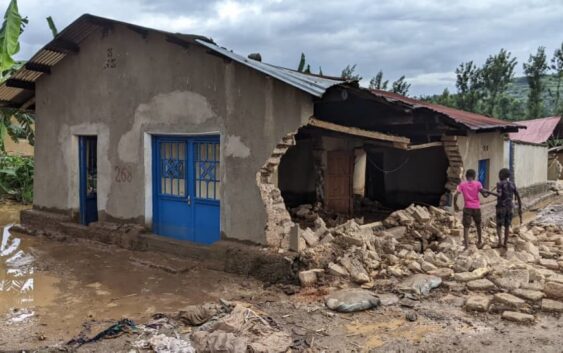- NAIROBI COUNTY SET TO ISSUE WAIVER FEE FOR RENOVATION AND REPAIR OF FLOOD-RELATED DESTRUCTION
- MUBENDE LAUNCHED CONSTRUCTION OF JUVENILE DETENTION FACILITY IN UGANDA
- HOW TEMANE-MAPUTO ELECTRICITY TRANSMISSION LINE PROJECT IS GOING THROUGH TEST IN MOZAMBIQUE
- NEWLY OPENED PLASTIC RECYCLING PLANT SET TO HELP COMBAT NAMIBIA's PLASTIC INDUSTRY
- PROGRESS MADE ON PIIM PROJECTS AS OVER 85% COMPLETED IN ANGOLA
RWANDA GOVT. SET TO SPEND US$184MILLION FOR DISASTER RECOVERY

Rwanda plans to spend Rwf215 billion for disaster recovery, including repairing infrastructure such as roads, water, and electricity, as well as resettling families whose houses were destroyed by disasters, according to Parliament.
Such an amount represents over 4 percent of more than Rwf5 trillion national budget for 2023/2024, which Parliament approved on June 27.
The budget was analyzed by the lower house’s committee on national budget and patrimony.
While giving a presentation on the budget analysis report, the committee chairperson, MP Omar Munyaneza, said that the Minister of Finance and Economic Planning, Uzziel Ndagijimana, informed its members “a lot of funds” were allocated to dealing with the issue of disasters that hit the country on the night of May 2 and May 3.
This, he said, is the factor that underlies why some financing gaps that were facing some activities and projects were not addressed in the first half of the upcoming fiscal year, which will begin on July 1.
After the disaster occurrence, Munyaneza said, the Government of Rwanda in partnership with the World Bank, carried out a study which showed that there was a need for Rwf629 billion for disaster prevention and recovery – a budget that is more than double the funds allocated to the country’s health sector in 2023/2024.
Of such amount, Munyaneza said, Rwf215 billion is planned for disaster recovery, of which Rwf132 billion is meant for the affected road, water, and electricity infrastructures alone.
He indicated that the remaining amount – Rwf83 billion – will help in renovating damaged schools, and health center, and relocating the residents whose houses were destroyed to safer places, including building new houses for them.
Speaking to The New Times, the Acting Director General of Rwanda Housing Authority, Noel Nsanzineza said that they thought about what we can do to help the people affected by disasters countrywide”, through relatively low-cost houses, which can address the problem.
To that end, he said that they constructed four ‘low-cost’ houses in Gakenke District — which were completed this week — to serve as a housing model for the affected families.
The houses, he indicated, were designed to have two or three rooms depending on the number of family members, explaining that the construction materials including burnt bricks are sourced locally and one cost between Rwf7 million and Rwf9 million.
The relatively affordable housing model, he said, could be scaled up in other districts to resettle the over 3,000 households in need of safe accommodation. He added that there are identified sites in the country where the affected families could be resettled.
Nsanzineza indicated that over 3,000 families should be relocated, pointing out that they include those whose houses were destroyed, or are in the red zone – the highest disaster risk area such that their lives were in danger.
Estimating the cost of a house at Rwf9 million, he said that the more than 3,000 needed houses could cost some Rwf27 billion — an amount he said would rise to an estimated Rwf41 billion if the cost of the needed plots of land (about Rwf14 billion) was factored in.
SOURCE: NewsTime

